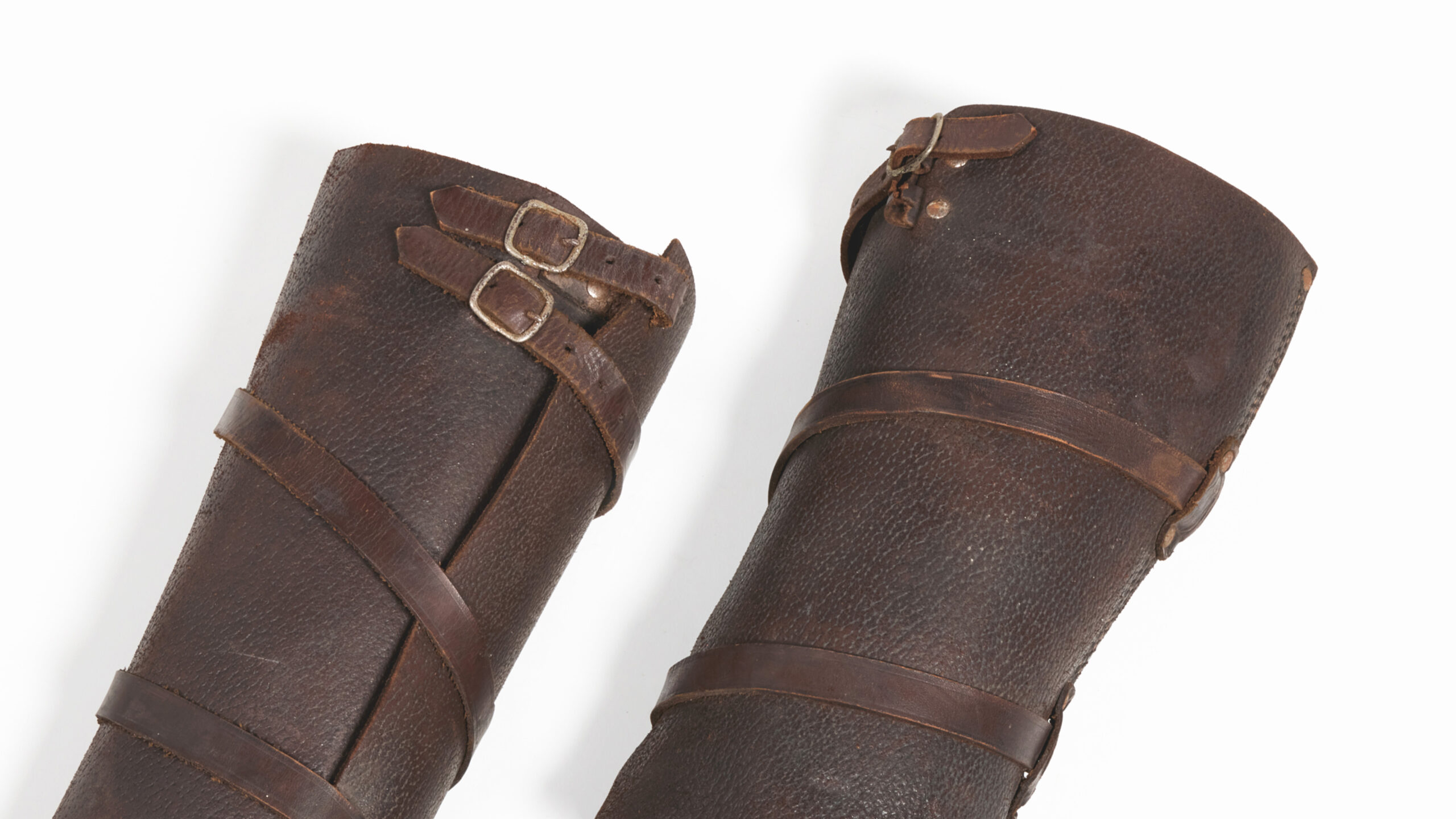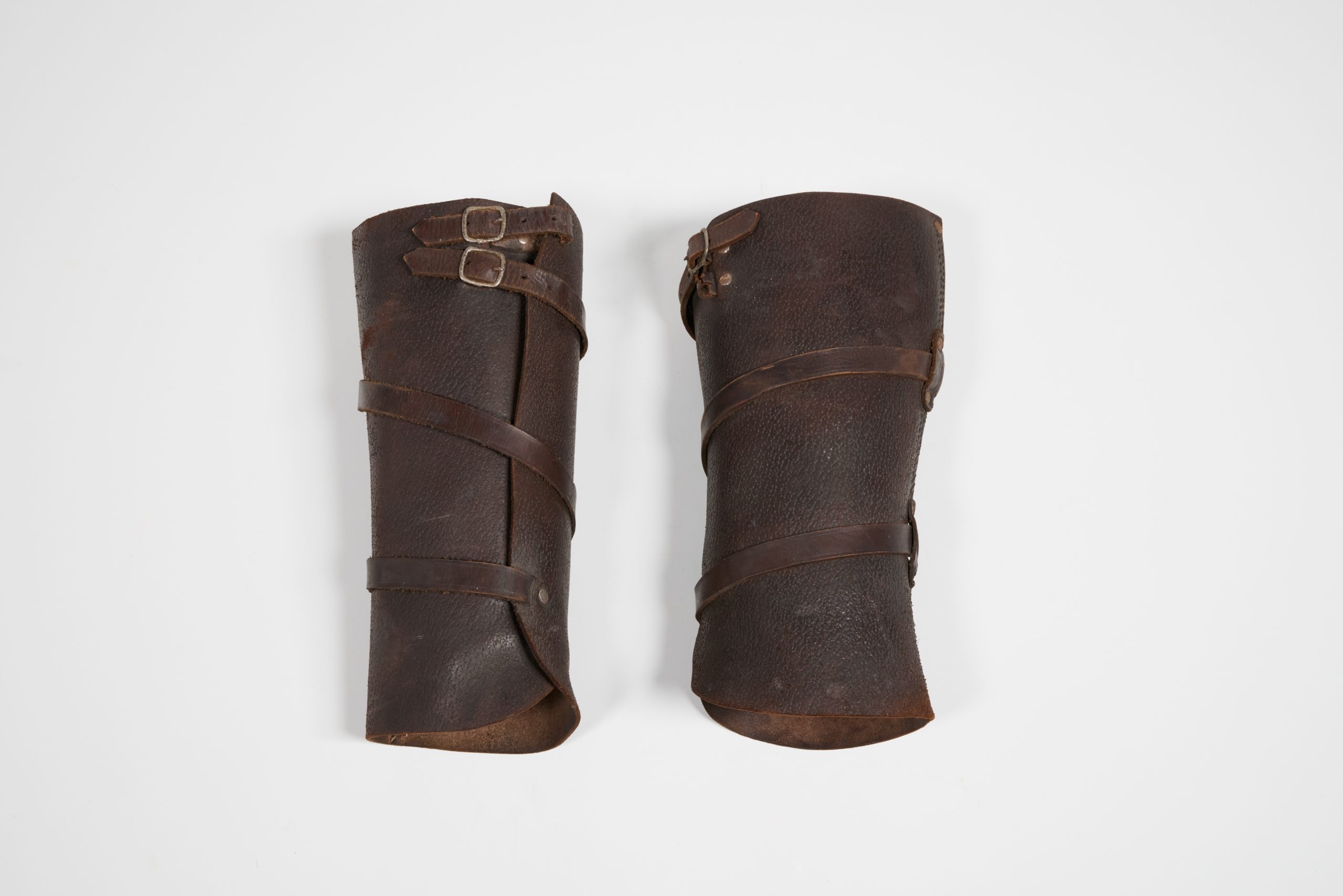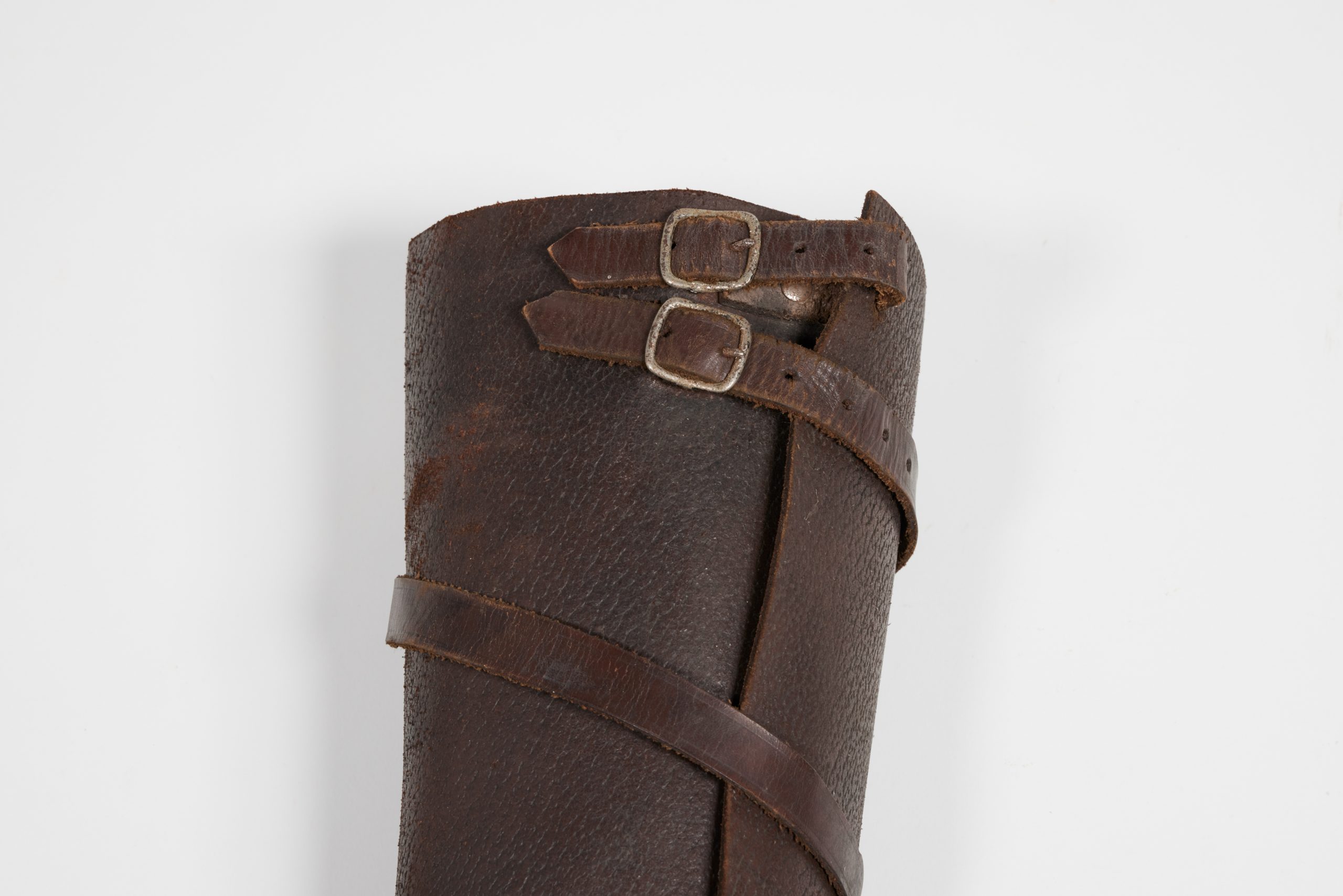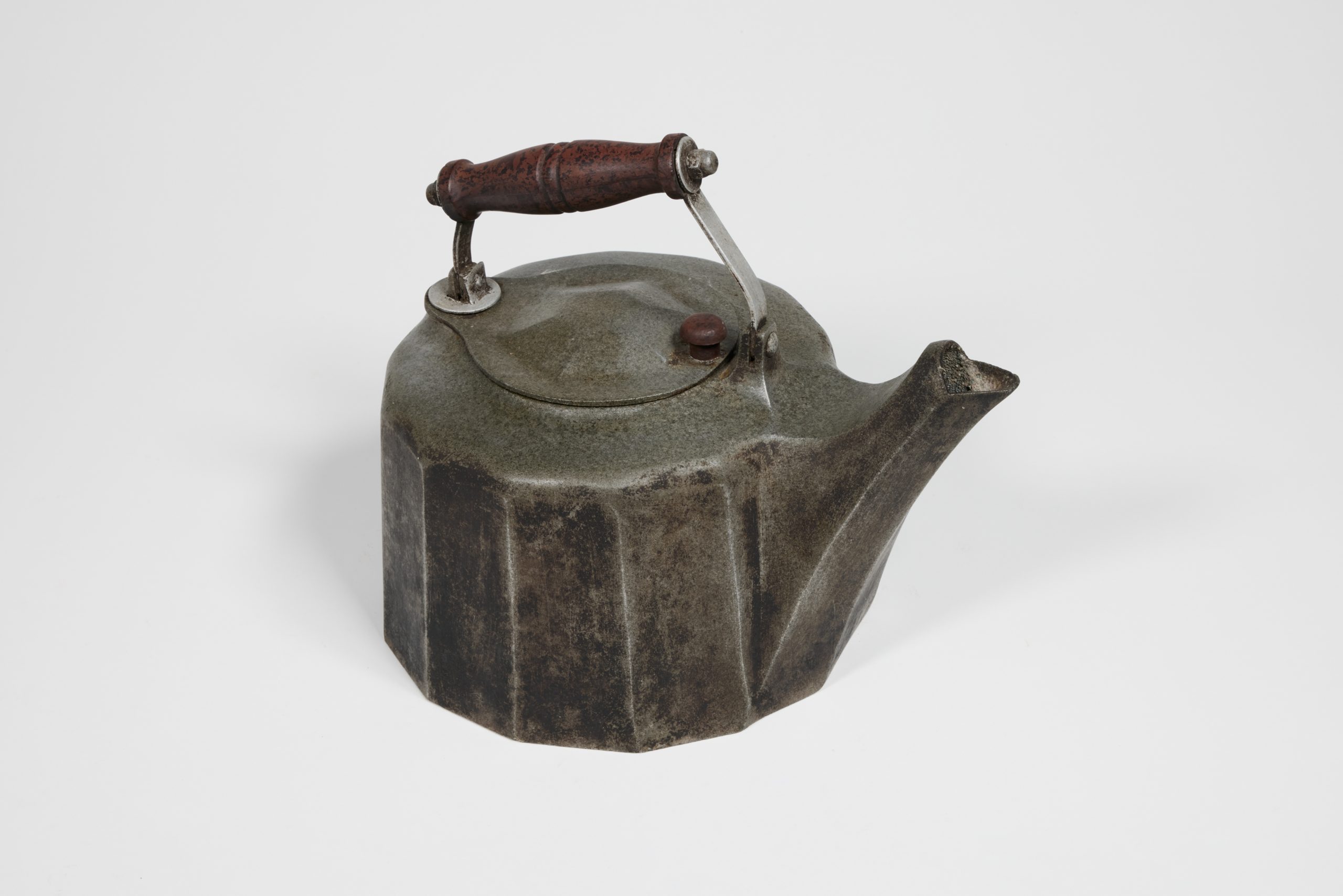Pigskin Protection
The Leg Armour of British and Commonwealth Soldiers
This style of gaiters were best known for being part of the uniform for Australia’s famed WWI Light Horse troops, but they were also worn by Australians in artillery, medical and transport units.
Francis Stowasser and George Winter patented this design in the UK and US in the late nineteenth century. But only Stowasser’s name stuck, because they came to be widely known as Stowasser pattern gaiters or leggings.
Australian soldiers wore the Stowasser gaiters as part of their uniform from 1903, as set out in the Army’s Dress Regulations of that year. But before the gaiters were worn by other Commonwealth forces, they were used by British officers during the Boer War (years). Originally, though, the Austro-Hungarian Army had adopted them.
Gaiters protected the legs of horse riders from chaffing against the saddle, stirrups or stirrup straps, as the horse moved. The straps that spiral from the base to the top of the gaiter have a buckle at either end of the strap. Tightening the strap tightens the fit of the gaiter, and the buckle stops the strap from loosening. They looked smart too.
Stowasser gaiters were usually made of cowhide or pigskin leather. The dimpled surface of this pair suggests they are pigskin gaiters, which were considered to be of higher quality than those made from cowhide.
Jack Nicholson, who first collected the gaiters before they were taken into the care of the Lake Tabourie Museum, had a keen interest in war-time objects and stories – including from the era of the Boer War and WWI.






